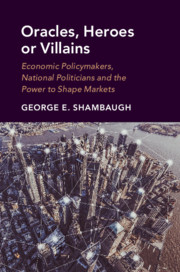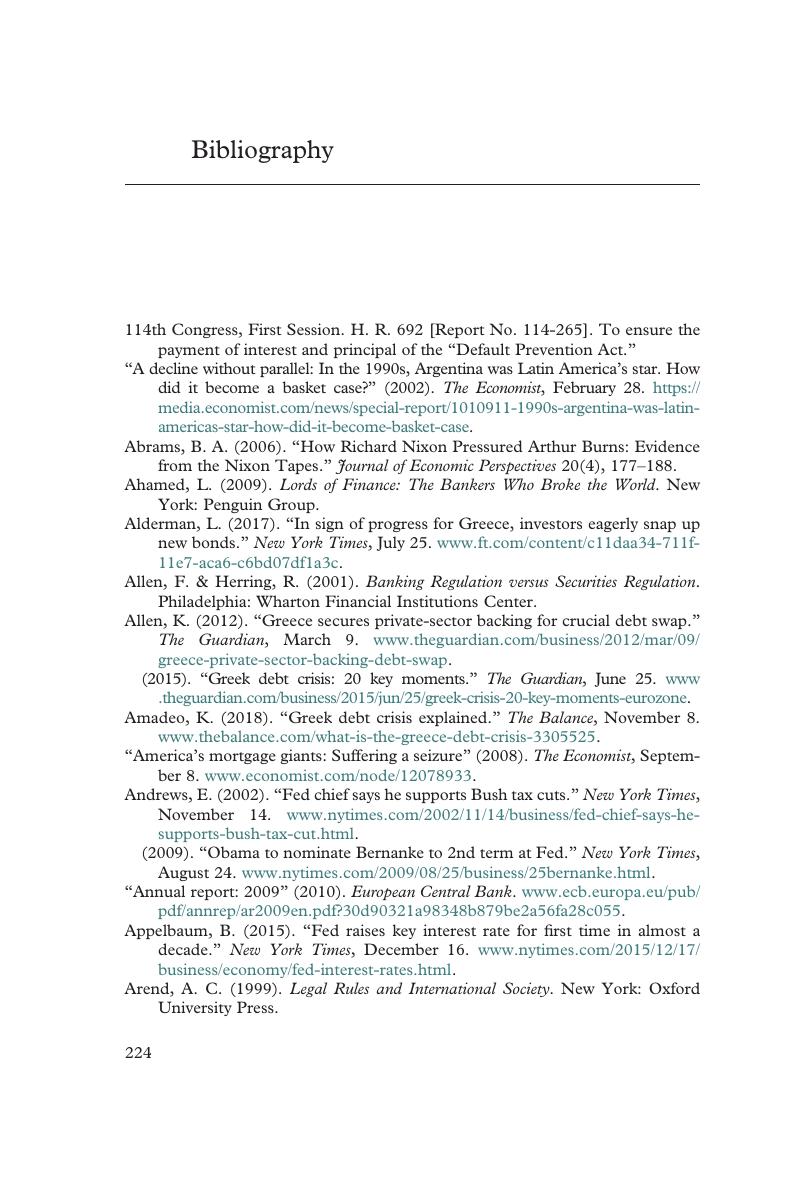 Oracles, Heroes or Villains
Oracles, Heroes or Villains Book contents
- Oracles, Heroes or Villains
- Oracles, Heroes or Villains
- Copyright page
- Dedication
- Contents
- Figures
- Preface
- Acknowledgments
- Abbreviations
- 1 Reaching for the Bazooka
- 2 Preferences, Power and Predictions
- 3 The Argentine Tango
- 4 The Federal Reserve Goes Political
- 5 A Greek Tragedy
- 6 Managing Markets in Turbulent Times
- Bibliography
- Index
- References
Bibliography
Published online by Cambridge University Press: 09 September 2019
- Oracles, Heroes or Villains
- Oracles, Heroes or Villains
- Copyright page
- Dedication
- Contents
- Figures
- Preface
- Acknowledgments
- Abbreviations
- 1 Reaching for the Bazooka
- 2 Preferences, Power and Predictions
- 3 The Argentine Tango
- 4 The Federal Reserve Goes Political
- 5 A Greek Tragedy
- 6 Managing Markets in Turbulent Times
- Bibliography
- Index
- References
Summary

- Type
- Chapter
- Information
- Oracles, Heroes or VillainsEconomic Policymakers, National Politicians and the Power to Shape Markets, pp. 224 - 247Publisher: Cambridge University PressPrint publication year: 2019


